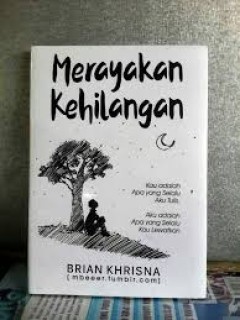Ditapis dengan
E-book The Catholic Faith Handbook for Youth
The chapters do not explain everything there is to know about the Catholic faith. They cover the essentials, the basics. The Did You Know? articles give additional information that a well-informed Catholic should be aware of. They provide you with the answers to questions like “Why are the priest’s vestments (special clothing worn during Mass) different colors at different times of the year…
- Edisi
- 3rd. ed
- ISBN/ISSN
- 9781599821863
- Deskripsi Fisik
- 109 hlm
- Judul Seri
- -
- No. Panggil
- 268 SIN t
E-Book Theological Libraries and Library Associations in Europe
During the past 50 years, theological libraries have confronted secularisation and religious pluralism, along with revolutionary technological developments that brought not only significant challenges but also unexpected opportunities to adopt new instruments for the transfer of knowledge through the automation and computerisation of libraries. This book shows how European theological libraries…
- Edisi
- -
- ISBN/ISSN
- 9789004523197
- Deskripsi Fisik
- 598 halaman
- Judul Seri
- -
- No. Panggil
- 020.72 KEN t
E-book The Diversity of Fishes : Biology, Evolution, and Ecology
Fishes make up more than half of the 55,000 species of living vertebrates. Along with this remarkable taxonomic diversity comes an equally impressive habitat diversity. Today, and in the past, fi shes have occupied nearly all major aquatic habitats, from lakes and polar oceans that are ice-covered through much of the year, to tropical swamps, temporary ponds, intertidal pools, ocean depths, and…
- Edisi
- 2nd ed.
- ISBN/ISSN
- 9781405124942
- Deskripsi Fisik
- 737 hlm
- Judul Seri
- -
- No. Panggil
- 597 HEL t
E-book Drawing Cartoons & Comics for Dummies
This book is for people interested in drawing cartoons, whether they’re novices unsure where to start or pros who want to improve their art or find better ways to market themselves. Every top-selling cartoonist in the world started out as a beginner. It takes time, practice, and some talent to become a successful cartoonist, but it also takes determination and the desire to stick to it until …
- Edisi
- -
- ISBN/ISSN
- -
- Deskripsi Fisik
- 363 hlm
- Judul Seri
- -
- No. Panggil
- 741.5 FAI c
E-book Principles of Fermentation Technology
The catobolism of sugars is an oxidative process which results in the production of reduced pyridine nucleotides which must be reoxidized for the process to continue. Under aerobic conditions, reoxidation of reduced pyridine nucleotide occurs by electron transfer, via the cytochrome system, with oxygen acting as the terminal electron acceptor. However, under anaerobic conditions, reduced pyridi…
- Edisi
- -
- ISBN/ISSN
- 0750645016
- Deskripsi Fisik
- 367 hlm
- Judul Seri
- -
- No. Panggil
- 663 STA p
E-book Food for All : International Organizations and the Transformation of A…
The world has produced enough food since the Second World War to feed itself despiterapid population growth, owing to extraordinary technological and institutional change.The rise in world food production, however, has been accompanied by unequal access tothat abundance, as well as soil degradation, loss of biodiversity, and growing water scar-cities. There have also been dramatic changes in th…
- Edisi
- -
- ISBN/ISSN
- 9780198755173
- Deskripsi Fisik
- 1063 hlm
- Judul Seri
- -
- No. Panggil
- 338.1 LEL f
E-book Patent Landscape Reoprt on Animal Genetic Resources
This patent landscape report provides an overview of international patent activity for animal genetic resources, in particular those relating to food and agriculture. The empirical analysis of patent activity for animal genetic resources for food and agriculture has received remarkably little attention in the scientific literature. Indeed, in conducting the present research we found no example …
- Edisi
- -
- ISBN/ISSN
- -
- Deskripsi Fisik
- 178 hlm
- Judul Seri
- -
- No. Panggil
- 591.3 OLD p
E-book Milk and Dairy Products in Human Nutrition
Good nutrition and access to an adequate diet and health are essential for child growth and development, body maintenance and protection from both infectious and non-communicable diseases (NCDs) in adult life. Adequate nutrition and a healthy productive population are increasingly recognized not only as resulting from but also as an important prerequisite for poverty reduction and economic and …
- Edisi
- -
- ISBN/ISSN
- 9789251078648
- Deskripsi Fisik
- 404 hlm
- Judul Seri
- -
- No. Panggil
- 641.371 BEN m
E-book The Age of the Soybean : An Environmental History of Soy During the Gr…
The soybean is far more than just a versatile crop whose derivatives serve the protein needs of a meatless diet. One of the world’s most important commodities, soy represents the embodiment of mechanised industrial agriculture and is one of the main actors behind the socioeconomic, political, and ecological transformations of industrial farming in several world regions. S…
- Edisi
- -
- ISBN/ISSN
- 9781912186655
- Deskripsi Fisik
- 387 hlm
- Judul Seri
- -
- No. Panggil
- 639.99 MOR t
E-book Mosquitopia : The Place of Pests in a Healthy World
Global warming is ushering us into a new mosquito epoch. Ready or not, mos-quitoes are coming faster than before, both indigenous and non-, human-biting and not, disease-carrying and sometimes–disease-carrying. What are we to do with these buzzing creatures, and what has been done with them so far? Usually perceived as a pest or at least as a nuisance, their mere presence often prompts us to …
- Edisi
- -
- ISBN/ISSN
- 9781003056034
- Deskripsi Fisik
- 313 hlm
- Judul Seri
- -
- No. Panggil
- 595.7 ACO m
E-book Cultural & Heritage Tourism : a Handbook for Community Champions
With many hundreds of historic sites sprinkled throughout the Yukon, there’s ample opportunity for visitors to delve into its colourful past. The challenge is to entice travellers, many passing quickly on their way to Alaska, to stop and experience as many as possible. Yukon’s culture and heritage come to life through roadside historic sites and unmarked graves, and major attractions and mu…
- Edisi
- -
- ISBN/ISSN
- 9780772666048
- Deskripsi Fisik
- 88 hlm
- Judul Seri
- -
- No. Panggil
- 910.2 WHY c
E-book 2022 Antelope, Deer and Elk Hunting Regulations
I recently saw a debate about whether the opening day of hunting season was more exciting than Christmas morning. If you’re anything like me — it’s not just the first day that is enthralling. It’s every stalk, every bugle, everytime my finger inches toward the trigger. The passion never quits, and I’m looking forward to a great 2022 season. As the director of the Wyoming Game and Fish…
- Edisi
- -
- ISBN/ISSN
- -
- Deskripsi Fisik
- 64 hlm
- Judul Seri
- -
- No. Panggil
- 338.3 GOR t
E-book The Greenhouse Gas Protocol : A Corporate Accounting and Reporting Sta…
The first edition of the GHG Protocol Corporate Accounting and Reporting Standard (GHG Protocol Corporate Standard), published in September 2001, enjoyed broad adoption and acceptance around the globe by businesses, NGOs, and governments. Many industry, NGO, and government GHG programs1 used the standard as a basis for their accounting and reporting systems. Industry groups, such as the Intern…
- Edisi
- -
- ISBN/ISSN
- -
- Deskripsi Fisik
- 116 hlm
- Judul Seri
- -
- No. Panggil
- 363.73874 DAW T

Digital circuits and systems
This world of digital electronics has undergone several major changes in the last two years. One of the most important changes has been in the tools and techniques we use to design, prototype, test and debug digital systems. We tested and debugged digital circuits with a simple oscilloscope, logic probe and voltmeter.
- Edisi
- -
- ISBN/ISSN
- 0071002170
- Deskripsi Fisik
- vi + 547 hal; 21 x 29 cm
- Judul Seri
- -
- No. Panggil
- 621.381 HAL d

E-book The Diary of a U-boat Commander
The M.S. of this amazing diary of a German U-Boat Commander has fallen into our hands under somewhat unusual and mysterious circumstances, the name of the writer being withheld for reasons which will be readily apparent to all who read his astounding experiences. It is, however, a story so thrilling and sensational that we have no hesitation in offering it as it stands to the public, kept so lo…
- Edisi
- -
- ISBN/ISSN
- -
- Deskripsi Fisik
- 142 p. 765 KB
- Judul Seri
- -
- No. Panggil
- 823 STE d

Esensi akuntansi keuangan.
Judul asli: Essence of fionancial accounting
- Edisi
- Cet.1
- ISBN/ISSN
- -
- Deskripsi Fisik
- ix, 152 hlm. :ilus. ;14x24 cm.
- Judul Seri
- -
- No. Panggil
- 657.48 CHA e

PERABAAN, PENGECAPAN DAN PENCIUMAN
- Edisi
- cet. 1
- ISBN/ISSN
- -
- Deskripsi Fisik
- 40 hlm; illus;24 x 19 cm
- Judul Seri
- -
- No. Panggil
- 574.1 WAR p
- Edisi
- cet. 1
- ISBN/ISSN
- -
- Deskripsi Fisik
- 40 hlm; illus;24 x 19 cm
- Judul Seri
- -
- No. Panggil
- 574.1 WAR p

The paladin : Kisah seorang anak kecil yang menjadi agen rahasia perang dunia 2
- Edisi
- cet. 1
- ISBN/ISSN
- 978-602-8801-60
- Deskripsi Fisik
- ;
- Judul Seri
- -
- No. Panggil
- 110 GAR t
- Edisi
- cet. 1
- ISBN/ISSN
- 978-602-8801-60
- Deskripsi Fisik
- ;
- Judul Seri
- -
- No. Panggil
- 110 GAR t

Filsafat ilmu sosial kontemporer
- Edisi
- cet. 1
- ISBN/ISSN
- 979-95978-79-x
- Deskripsi Fisik
- xii;396hlm;;16x24 cm
- Judul Seri
- -
- No. Panggil
- 128 FAY f
- Edisi
- cet. 1
- ISBN/ISSN
- 979-95978-79-x
- Deskripsi Fisik
- xii;396hlm;;16x24 cm
- Judul Seri
- -
- No. Panggil
- 128 FAY f

ASPIRE: 11 Kata Yang Akan Mengubah Kehidupan Anda
- Edisi
- cet. 1
- ISBN/ISSN
- 978-979-22-7736
- Deskripsi Fisik
- xviii; 238 hlm;13,5 x 20 cm
- Judul Seri
- -
- No. Panggil
- 153.2 HAL a
- Edisi
- cet. 1
- ISBN/ISSN
- 978-979-22-7736
- Deskripsi Fisik
- xviii; 238 hlm;13,5 x 20 cm
- Judul Seri
- -
- No. Panggil
- 153.2 HAL a

Roma: Kasih karunia dan kemuliaan = Romans: Grace and glory
Salah satu metode dan sarana yang tepat pada waktunya adalah terjemahan Alkitab. Terjemahan-terjemahan Alkitab adalah karunia sekaligus masalah. Terjemahan-terjemahan, memberi kita firman Tuhan yang diucapkan melalui hamba-hamba-Nya, tetapi kata-kata dapat menjadi bejana yang sangat buruk untuk pewahyuan karena kata-kata itu bocor! Arti dari kata-kata berubah dari satu generasi ke generasi. …
- Edisi
- cet. 1
- ISBN/ISSN
- 9786024190637
- Deskripsi Fisik
- 155 hlm. 15 x 20 cm
- Judul Seri
- -
- No. Panggil
- 241SIM r

Merayakan kehilangan
Aku sudah bahagia sekarang. Tak perlu kau cemaskan aku lagi. Aku sudah ditemukan oleh seseorang. Yang seperti doamu dulu sebelum pergi meninggalkanku: yang akan benar-benar menyayangiku. Yang akan benar-benar mencintaiku. Kini aku telah ditemukannya, seseorang yang mencintai aku sebesar cintaku kepadamu dulu; atau bahkan lebih. Aku sudah bahagia sekarang. Tak perlu lagi kau khawatirkan kab…
- Edisi
- cet. 5
- ISBN/ISSN
- 9789797945275
- Deskripsi Fisik
- ii + 222 hlm.; illus 13 X 19 cm
- Judul Seri
- -
- No. Panggil
- 899.2213 KHR m

PEMELIHARAAN TUBUH: Tubuh Manusia
Tubuh kita dijalankan dan dipelihara oleh ribuan reaksi kimia yang terpisah-pisah dan sangat rumit. Hal ini dapat berlangsung dengan baik hanya bila tubuh dalam keadaan sehat. Kita dapat mengontrol raksi kimia tubuh kita karena semuanya berlangsung di dalam tubuh kita sendiri. Faktor-faktor lain, seperti suhu udara di sekitar kita dan makanan yang kitamakan, dapat juga mempengaruhi keadaan di d…
- Edisi
- -
- ISBN/ISSN
- 979-490-202-0
- Deskripsi Fisik
- 48 hlm; illus;19 x 24cm
- Judul Seri
- -
- No. Panggil
- 574.1 WAR p

INSTANT CREATIVITY: 76 Cara Instan Meningkatkan Kreativitas
- Edisi
- -
- ISBN/ISSN
- 978-979-015-085
- Deskripsi Fisik
- v; 194 hlm; ILLUS;14 x 20,5 cm
- Judul Seri
- -
- No. Panggil
- 658.31 CLE i
- Edisi
- -
- ISBN/ISSN
- 978-979-015-085
- Deskripsi Fisik
- v; 194 hlm; ILLUS;14 x 20,5 cm
- Judul Seri
- -
- No. Panggil
- 658.31 CLE i

INSTANT TEAMWORK: 72 Cara Instan Meningkatkan Semangat Tim
- Edisi
- cet. 2
- ISBN/ISSN
- 978-979-015-084
- Deskripsi Fisik
- v; 185 hlm; illus;14 x 20,5 cm
- Judul Seri
- -
- No. Panggil
- 658.31 CLE i
- Edisi
- cet. 2
- ISBN/ISSN
- 978-979-015-084
- Deskripsi Fisik
- v; 185 hlm; illus;14 x 20,5 cm
- Judul Seri
- -
- No. Panggil
- 658.31 CLE i

PEMELIHARAAN TUBUH: Tubuh Manusia
- Edisi
- -
- ISBN/ISSN
- 979-490-202-0
- Deskripsi Fisik
- 48 hlm; illus;19 x 24cm
- Judul Seri
- -
- No. Panggil
- 574.1 WAR p
- Edisi
- -
- ISBN/ISSN
- 979-490-202-0
- Deskripsi Fisik
- 48 hlm; illus;19 x 24cm
- Judul Seri
- -
- No. Panggil
- 574.1 WAR p

PENGANTAR ILMU ELEKTRONIKA: Elektronika
- Edisi
- -
- ISBN/ISSN
- -
- Deskripsi Fisik
- vii , 195hlm;19cm x 24cm
- Judul Seri
- -
- No. Panggil
- 537 BRA p
- Edisi
- -
- ISBN/ISSN
- -
- Deskripsi Fisik
- vii , 195hlm;19cm x 24cm
- Judul Seri
- -
- No. Panggil
- 537 BRA p

SISTEM SARAF
- Edisi
- -
- ISBN/ISSN
- -
- Deskripsi Fisik
- illus, 48 hlm;24 x 19 cm
- Judul Seri
- -
- No. Panggil
- 574.1 WAR s
- Edisi
- -
- ISBN/ISSN
- -
- Deskripsi Fisik
- illus, 48 hlm;24 x 19 cm
- Judul Seri
- -
- No. Panggil
- 574.1 WAR s

SANG PUTRI DAN SI MISKIN
- Edisi
- cet. 3
- ISBN/ISSN
- 979-22-0909-3
- Deskripsi Fisik
- 272 hlm;13,5 x 20 cm
- Judul Seri
- -
- No. Panggil
- 823 BRI s
- Edisi
- cet. 3
- ISBN/ISSN
- 979-22-0909-3
- Deskripsi Fisik
- 272 hlm;13,5 x 20 cm
- Judul Seri
- -
- No. Panggil
- 823 BRI s

PERPUSTAKAAN DIGITAL: Perspektif Perpustakaan Perguruan Tinggi Indonesia
- Edisi
- cet. 1
- ISBN/ISSN
- 978-979-3288-20
- Deskripsi Fisik
- v; 299 hlm;;15 x 23 cm
- Judul Seri
- -
- No. Panggil
- 025.17 PEN p
- Edisi
- cet. 1
- ISBN/ISSN
- 978-979-3288-20
- Deskripsi Fisik
- v; 299 hlm;;15 x 23 cm
- Judul Seri
- -
- No. Panggil
- 025.17 PEN p

 Karya Umum
Karya Umum  Filsafat
Filsafat  Agama
Agama  Ilmu-ilmu Sosial
Ilmu-ilmu Sosial  Bahasa
Bahasa  Ilmu-ilmu Murni
Ilmu-ilmu Murni  Ilmu-ilmu Terapan
Ilmu-ilmu Terapan  Kesenian, Hiburan, dan Olahraga
Kesenian, Hiburan, dan Olahraga  Kesusastraan
Kesusastraan  Geografi dan Sejarah
Geografi dan Sejarah